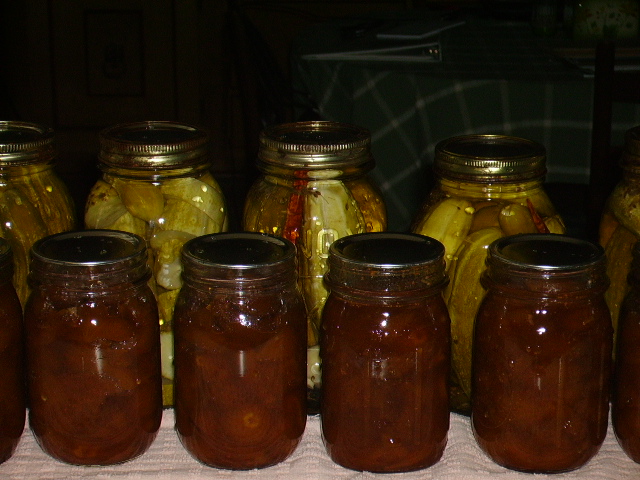
Introduction
You put beans, salt, and boiling water into a jar, cap with a hot lid, set it in a pressure pan that has a couple of quarts of water in it, apply the lid and the pressure gauge, turn on the heat, wait a while, turn it off, take the jar out, and you are done. What could be easier? People do this all the time!
Yet it took us about 4000 years or so to figure it out. The idea of canning, itself, did not come about until the early 1800’s. Tin cans were first used in the U.S. in 1839. Mr. John Mason invented the canning jar in 1858.
Before then, we starved a lot.
There are many advantages to cooking food at all. Many foods become much easier to chew and swallow. Imagine eating a raw roast! Cooking also often improves digestibility. Eating a nice big helping of delicious raw peas would put you through abundant abdominal agony!
Although cooking usually also improves the flavor of foods, we often prefer some foods raw, or fresh-frozen, such as strawberries: the canned ones are like mush. Still–if your only choice is between overly soft strawberries and NO strawberries, you begin to see the advantage.
Almost any type of food can be canned, though some with less success. Fruits are canned at 5 pounds of pressure for a short time because their acidity makes them less apt to spoil and their fragility makes them disintegrate easily. Vegetables are more rugged and less acid, so they require 10 pounds for around 30 minutes. Meats must be very thoroughly cooked and so are placed under 10 – 15 pounds of pressure for about 90 minutes.
The purpose of the pressure is to achieve higher temperatures: The water in the pressure pan boils at 240 degrees (instead of the normal 212 degrees) under 10 pounds of pressure, the secret of the short cooking times.
To prepare food for canning you must first clean it. Beans, peas, etc., may simply be rinsed several times. Greens require at least seven rinses. Carrots, potatoes, etc., must be well-scrubbed with a brush. Even your own organically grown, guaranteed unsprayed apples must be carefully washed because ants, roaches, and flies crawl on them all the time. These creatures spread staph, strep, fungus, and yeast diseases.
After cleaning, cut the food into bite-size or jar-size pieces. Most foods do not need peeling but beets and tomatoes usually do. Some people also blanch food before packing it into the jars. The purpose, then, is to get more into the jar with slightly softer vegetables. Beets, potatoes, peaches, and tomatoes peel more easily when blanched.

i will try this when i have or borrow the equipment….you make it sound so easy!
It can be easy–my kids do it for me, sometimes–but it can be a job keeping up with enough for 8 people! 😉 Thanks for stopping by!
Reblogged this on Home's Cool! and commented:
Well, it’s earlier this year, here, but it’s time for this, again. I will reblog all the parts today, so you don’t have to wait for them. Enjoy!